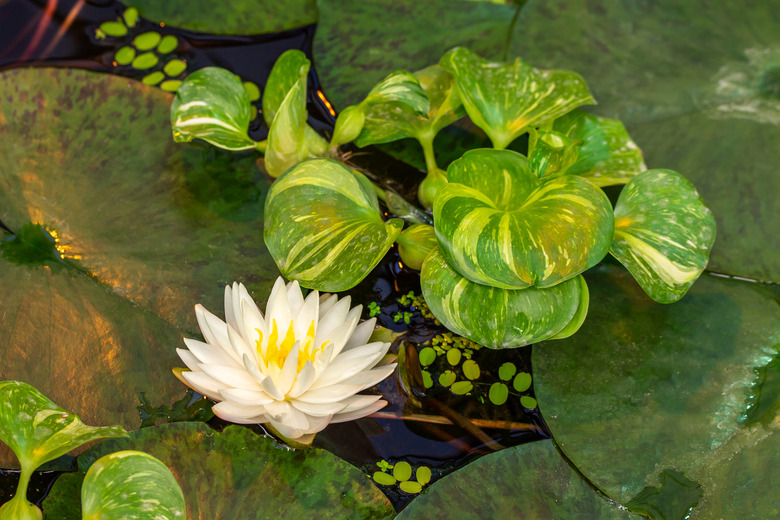How To Make A Freshwater Biome
A biome is a community of plants and animals living in a habitat created by a unique climate. A freshwater biome is defined by the low salt content of its water, specifically, less than 500 parts per million of dissolved salts. There are several types of freshwater biomes. Flowing water biomes include streams and rivers and standing water biomes include ponds, lakes and wetlands.
Step 1
Create a flowing water biome by using blue construction paper to lay out the river or stream flowing down from a mountain, beginning narrow, widening in the middle and opening up at the mouth to a water channel or ocean. Label the headwaters higher than the rest of the flowing water. Headwaters can be snow melt or springs and lakes in higher elevation areas. Include pictures of trout, and photosynthetic plants able to adapt to higher elevations.
Further downstream where the river widens, greater species diversity is present as a result of a flatter geographic plane. More sunlight reaches the water. Include pictures of floating green plants, plants and algae growing out of the water at its edge clinging to rocks. Pictures of dragonflies, damselflies, amphibians (frogs), reptiles (turtles) and animals that consume food provided by the river, like otters, will accurately depict the middle of a river.
At the mouth, indicate murky water resulting from sediments washing down river. Less light is available for photosynthesis due to the sediment. Indicate less oxygen availability by limiting plant pictures but including pictures of catfish and carp which thrive in low oxygen areas.
Step 2
Depict a standing water lake or pond by creating a cross section in your shoe box. Categorize the picture using distance and depth from the shoreline.
Label the area nearest the shoreline as the "littoral" zone which is the most shallow and warm. Show rooted and floating plants and abundant insects, snails, clams, insects, frogs, turtles, freshwater crustaceans and mollusks.
Label the near surface open water as the "limnetic" zone which receives good sunlight where phyto -and zoo- plankton are plentiful, producing food for freshwater fish.
Label the deep water as the "profundal" zone. Here the water is cold, denser and darker. Lack of sunlight creates a good environment for bacteria and fungi, the community decomposers that produce carbon dioxide for plant growth in other areas of the lake or pond. Make sure you show bacteria and fungi within the sediment at the bottom of the standing water.
Step 3
Depict a standing freshwater wetland by creating a picture of a moist, humid marsh, swamp or bog. Make sure you include pictures of pond lilies, cattails, sedges, tamaracks and cypress as well as different types of water insects, amphibians, reptiles and furbearers. Make sure you include migratory birds, like ducks and waders.
It would also be beneficial to show fluctuating water levels because wetland areas are created by water flowing in and out, via groundwater saturation, differing amounts of rainwater received or other natural processes.
Things Needed
- Shoe box
- Construction paper
- Magazine pictures of biota and fauna
Cite This Article
MLA
, Diane Bacher. "How To Make A Freshwater Biome" sciencing.com, https://www.sciencing.com/make-freshwater-biome-5720192/. 22 November 2019.
APA
, Diane Bacher. (2019, November 22). How To Make A Freshwater Biome. sciencing.com. Retrieved from https://www.sciencing.com/make-freshwater-biome-5720192/
Chicago
, Diane Bacher. How To Make A Freshwater Biome last modified March 24, 2022. https://www.sciencing.com/make-freshwater-biome-5720192/
